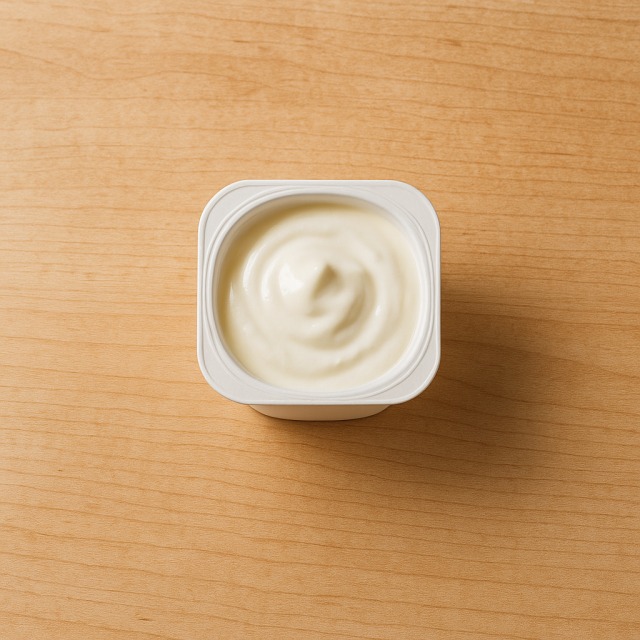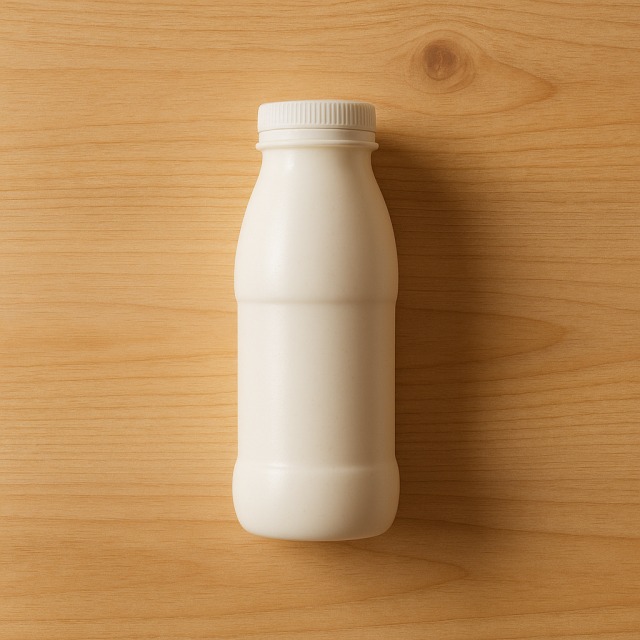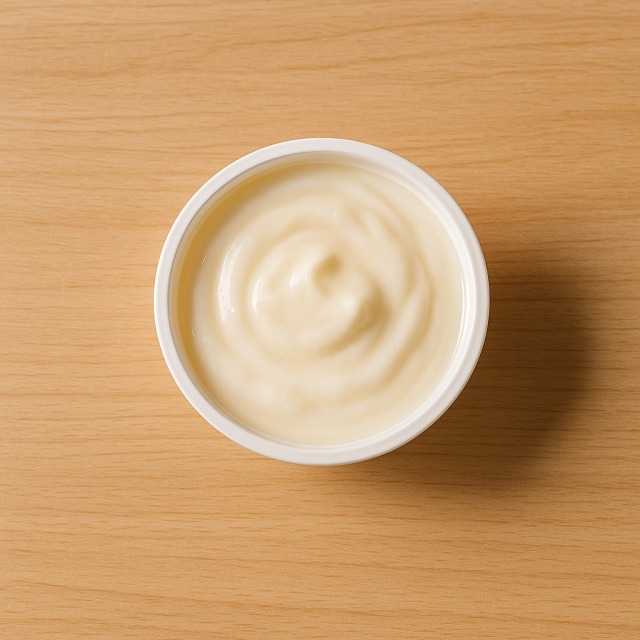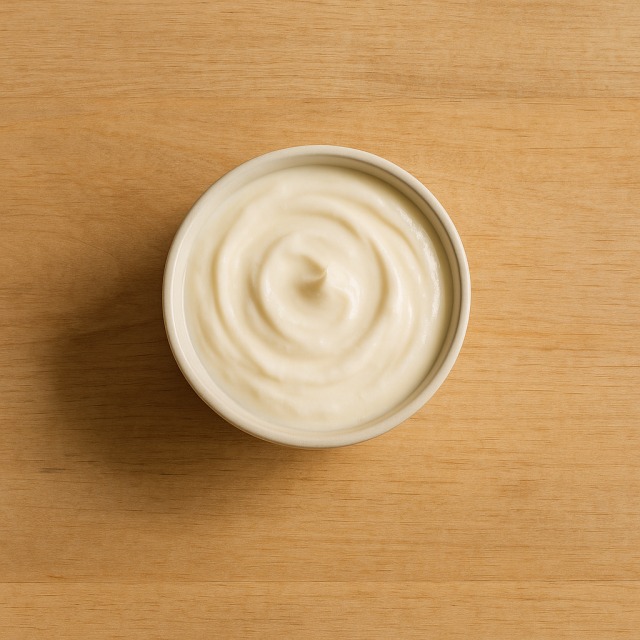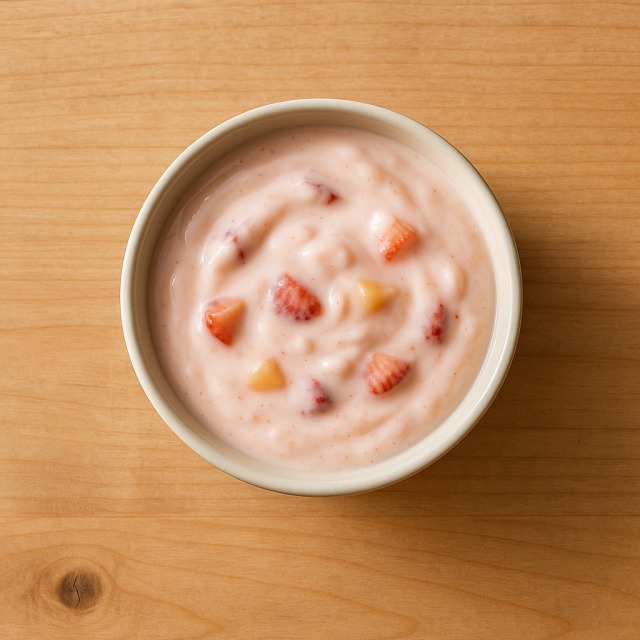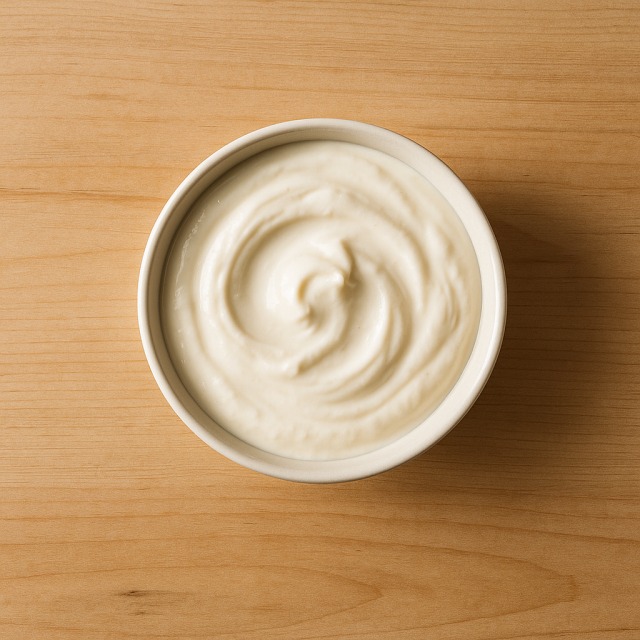Calorie Chart / Desserts / Yogurt - Flavoured
How Many Calories Are in Flavored yogurt?
Calculation of the nutritional value & Recommended Dietary Intake of flavored yogurt
For g and a calorie requirement of kcal
| Calories 125 kcal | Proteins 4.9 g | Lipids 1.1 g | Carbohydrates 18 g |
| 6% | 7% | 2% | 7% |
Health benefits of flavored yogurt
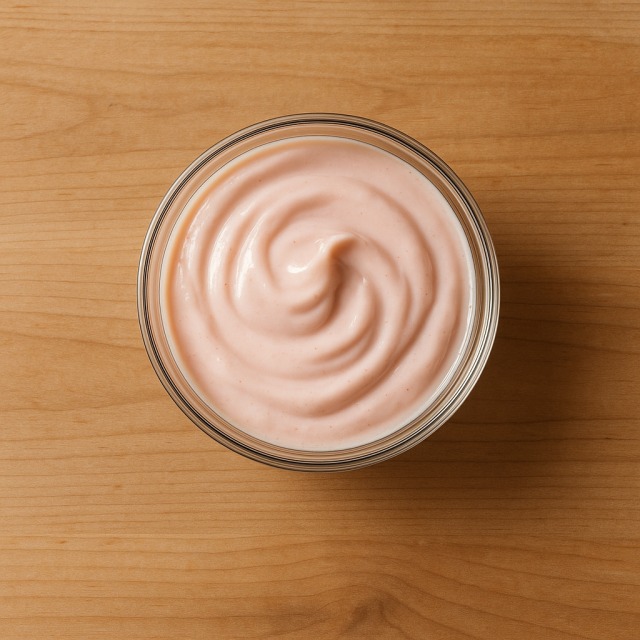
Flavored yogurt - 100g
Calories 100 kcal
Proteins 3.9 g
Lipids 0.9 g
Carbohydrates 14 g
With about 100 kcal per 100 g, flavored yogurt is a moderate-calorie dairy product: it supplies enough energy without exploding your daily calorie budget. Those calories come mainly from natural milk lactose and the added fruit or aroma sugars, while proteins represent a useful 3.9 g/100 g to help maintain muscle mass.
Flavored yogurt provides roughly 15% of the recommended daily intake of calcium for bone health and delivers vitamin B2 (riboflavin) and vitamin B12, both essential for energy metabolism—another good reason to monitor calories while still fueling the body efficiently. Live ferments such as Lactobacillus bulgaricus contribute to gut microbiota balance, a supposed benefit often associated with improved digestion and better immune response ("supposed" because scientific evidence is still evolving).
Thanks to its almost negligible fat content (0.9 g/100 g), flavored yogurt lets you satisfy a sweet craving with far fewer calories than desserts like a molten chocolate cake or ice cream. Choosing a pot enriched with real fruit sometimes adds small amounts of potassium and antioxidants from berries or peaches, again without excessive calories.
Historically, yogurt entered Western diets in the early 20th century, championed by Nobel laureate Ilya Mechnikov for its lactic cultures. The flavored version appeared in the 1960s, offering a ready-to-eat snack whose calories were considered modest compared with pastries of the same era.
Tips for incorporating flavored yogurt into a balanced diet
If you watch calories at breakfast, top 125 g of flavored yogurt with two tablespoons of oat flakes and a few slices of banana; you'll stay under 250 kcal while getting slow-release carbs and extra fiber. For a protein-rich snack after training, mix one pot with a spoonful of peanut butter—yes, fat increases calories slightly, but satiety lasts longer.
As a light dessert, layer flavored yogurt, fresh strawberry quarters, and a drizzle of honey in a verrine: visually appealing and still reasonable in calories compared with a waffle. To accompany a spicy main dish such as chicken curry with rice, serve a mint-infused flavored yogurt dip; the freshness balances the heat without adding too many calories.
For a balanced lunchbox, pair a small jar of flavored yogurt with a salad of spinach, apple cubes, and grilled salmon. The mix supplies protein, omega-3s, and vitamins while keeping overall calories in check. Remember that portions drive calories—choose the 0% fat version if you need to trim another 20 to 30 kcal per serving.
Frequently Asked Questions
- How many calories are in flavored yogurt?
- There are 100 kcal per 100 g of flavored yogurt.
- Is flavored yogurt suitable for a weight-loss diet?
- Yes, its 100 kcal per 100 g places it in the moderate-calorie range; choose small pots and watch added toppings to keep total calories low.
- What is the difference in calories between flavored yogurt and plain yogurt?
- Plain yogurt averages 60–65 kcal per 100 g, while flavored yogurt reaches 100 kcal because of added sugar, so plan the rest of the meal to offset the extra calories.
- How can I lower the calories of my flavored yogurt snack?
- Opt for light or 0% fat versions, split the portion in two, or mix half a pot with diced apple to increase volume without adding many calories.
- Does flavored yogurt provide enough protein for athletes?
- At 3.9 g protein per 100 g, one 125 g pot offers about 5 g. Combine it with a serving of almonds or a slice of wholemeal bread for a higher-protein, still moderate-calorie recovery snack.
Similar foods
Information provided by Calorie Menu may contain inaccuracies or errors. It cannot, under any circumstances, substitute medical advice or medication.
